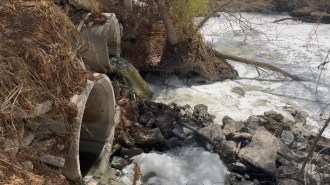Old thermometers pose new problems
For decades, mothers checked their children for fevers by using a fragile glass stick filled with a silvery liquid. Formerly a medicine-cabinet staple, these mercury thermometers have lately been ruled a public health hazard. If broken, they release mercury, a poison that vaporizes and can then be inhaled. Last year, an American Academy of Pediatrics report designated mercury a major environmental toxicant that “should not be present in the home or other environments of children.” It explicitly identified old fever thermometers as a source. Newer thermometers use nontoxic heat sensors.
Now, there’s another problem. According to a new study, people are getting bum advice from government agencies on how to dispose of their mercury thermometers.
After a caller reported getting contradictory advice from local officials on how to dispose of a mercury thermometer, Bruce Ruck and his colleagues at the New Jersey Poison Information and Education System in Newark launched a survey of 80 state, local, and county environmental and health offices.
In the May electronic edition of Pediatrics, Ruck’s team reports that 36 agencies advocated simply pitching the thermometers into the trash, and 25 told callers to phone another official. Less than one-quarter offered what Ruck deems the “proper” instruction: Take the device to a hazardous-waste collection station. Loose pieces of a broken thermometer and any materials that contacted its mercury should be scooped into an airtight jar before they’re transported, he notes.
Anthony Carpi and Yung-Fou Chen of the City University of New York (CUNY) have conducted studies that highlight lingering risks posed by mercury released in homes. The pair surveyed mercury in the air of 12 structures representing a cross-section of New York’s buildings. Though none of these sites was known to have had a mercury spill, the scientists found the metal “significantly elevated over outdoor concentrations” at all but one site — and far over the outdoor concentration at eight sites.
The CUNY scientists then probed one of the highly tainted sites — to determine the source of the mercury. Eventually, the researchers identified a meter-square area of hardwood floor that, they concluded, had been the site of “a spill of mercury from a thermometer or other mercury-containing device” before the current tenants moved in 3 years ago. They reported their findings in the Nov. 1, 2001 Environmental Science & Technology.







